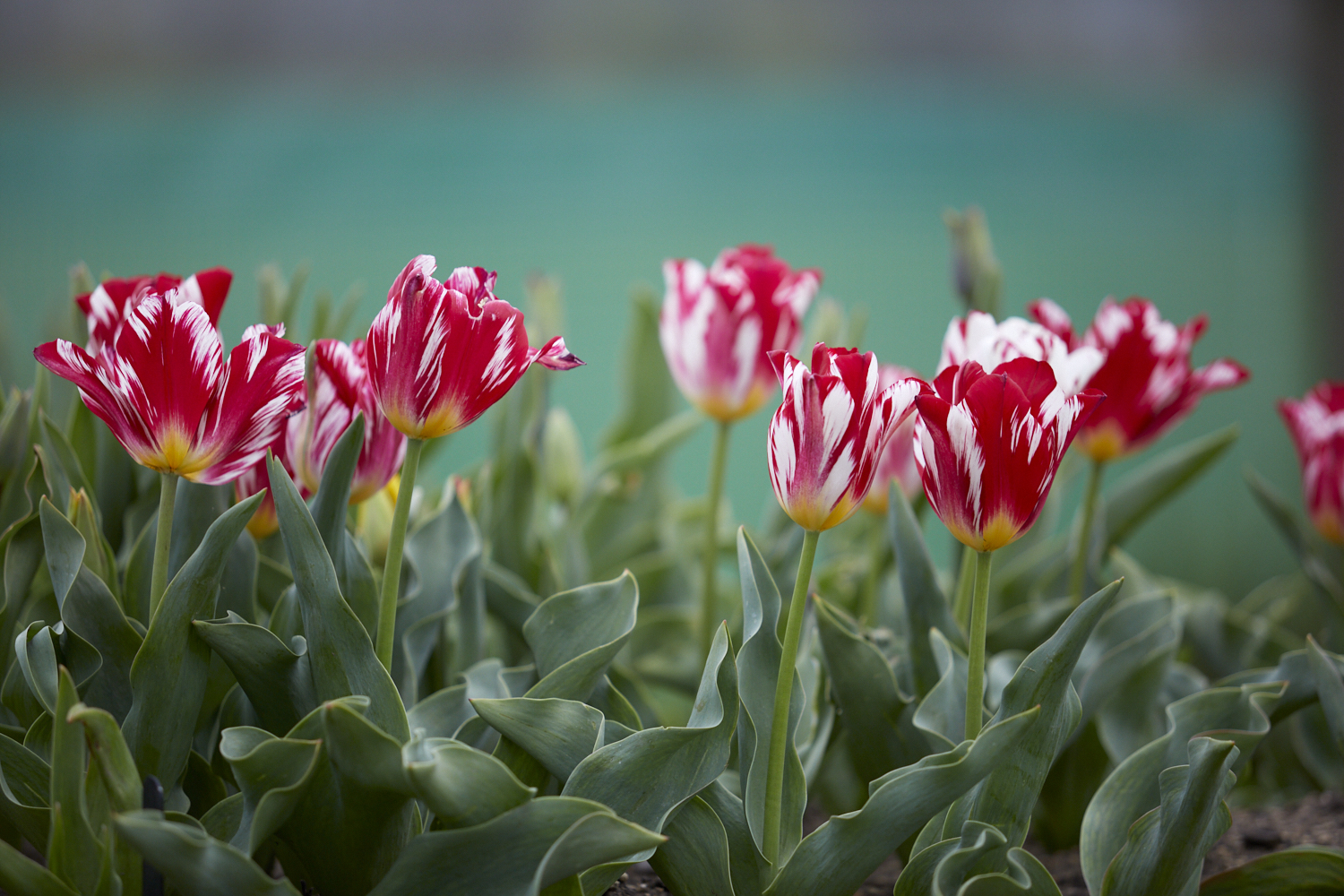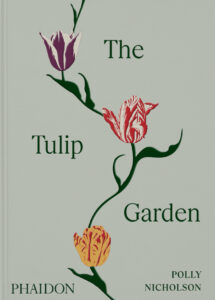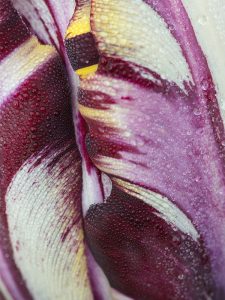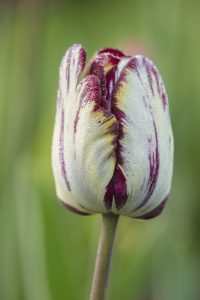Tulipmania, getting the best from your display

Polly Nicholson owner of Blackland House is holder of the National Collection of Tulipa (Historic) with Plant Heritage. We asked her for some tips on tulip care and getting the best from your display, here’s what she said.
Care for our tulips begins with the soil. We make sure that it is well fed with our own homemade compost and add horticultural sand so that it is as free-draining as possible. Extra special tulips like those in our historic collection are planted on a 5cm bed of sand, to prevent them rotting in prolonged wet periods.
Once the tulips are in full growth we feed them every two weeks with an organic seaweed feed, such as Shropshire Seaweed. We are certified by the Soil Association UK so any inputs are as natural as possible and have to meet their stringent standards. Irrigation is critical in containers, but it is important not to overwater too – always plunge a finger right into the soil to test the true moisture levels, rather than judging by the soil surface which can be deceptive. We water around the edge of a container, and under the leaves, so as not to mark the foliage.
Checking for damage and disease is part of my daily routine. Early in the season squirrels are out biggest threat, and to prevent bulb thefts we cover all our containers with conical chicken wire ‘hats’. Once the tulip shoots are around 3” high we remove the protection, and slug watch begins. Thankfully we don’t seem to have too much of an issue at Blacklands, but we have on occasion resorted to using an organic slug repellent such as ‘Sluggo’ (in addition to keeping an eye on the inside edges of pots, which is where they like to hide). Squirrels aside, botrytis tulipae or tulip fire is our biggest risk, and it has got steadily worse over the past few years as we experience warmer, wetter winters. Planting the tulips a little further apart to allow air circulation can help, but the best advice I can offer is to carefully tear off infected leaves which will present as spotted or mouldy.
Once in flower we continue to feed the tulips and take time to enjoy their moment in the sun (hopefully!) We try to recycle as many of our container tulips as possible, so we make the effort to deadhead the spent blooms, to help the plant direct energy back into producing a nice new mother bulb for the next season rather than forming a seedhead. They are left in situ for a couple of weeks before being pulled up, dried in racks under cover then replanted along the rough edges of our driveway in early winter.
- George Grappe
- Rembrandt
- Insulinde
RECOMMENDED VARIETIES
- ‘Flaming Spring Green’ (Division 8, Viridiflora) is a twist on the much-loved ‘Spring Green’ with a splash of vivid red on each petal. It works beautifully with reds, blacks and whites and I have recently included it in a container scheme with ‘Estella Rijnveld’, ‘Maureen’ and ‘Renegade’
- ‘Burgundy’ (Division 6, Lily-flowered) pointy petalled and waisted, deepest purple, combines well with pinks and oranges. Lily-flowered tulips have strong repeat flowering properties, and I grow them in the rough grass verges of our driveway.
- ‘Menton’ (Division 5, Single Late) luminescent rose pink and coral, a ‘French’ tulip with super-long, super-strong stems. Excellent as a cut flower and in perennial schemes.
- ‘Black Parrot’ (Division 10, Parrot) is smaller than some parrots, but withstands the Wiltshire weather better than any other. Works well in containers (try mixing it with ‘Menton’, ‘Queen of Night ‘and ‘Slawa’) and as a cut flower.
- ‘Wyndham’ (Double Late) peony-flowered in strong tones of claret and cream, which fade over the long flowering period. I favour mixing different doubles together for maximum effect, rather than combining them with tulips from other divisions.
To find out more about planned opening times this spring click here
 Discover more with Polly’s wonderful, beautifully illustrated new book, The Tulip Garden: Growing and Collecting Species, Rare and Annual Varieties – an inspirational introduction to growing and collecting tulips, set against the backdrop of a beautiful English garden, with expert tips and advice for gardeners.
Discover more with Polly’s wonderful, beautifully illustrated new book, The Tulip Garden: Growing and Collecting Species, Rare and Annual Varieties – an inspirational introduction to growing and collecting tulips, set against the backdrop of a beautiful English garden, with expert tips and advice for gardeners.
Published by Phaidon with photographs by Andrew Montgomery.
Lead and garden images © Britt Willoughby Dyer
Tulip portraits © Clive Nichols
If you enjoyed this content please consider making a donation to help us continue to support our nursing and health beneficiaries.





















